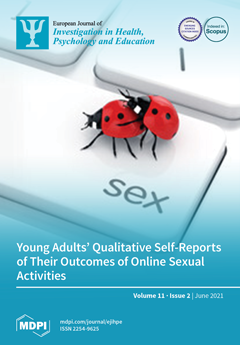During the ongoing global pandemic, faculty, staff and administrators at colleges and universities experienced an increase in meetings using web-based platforms. Challenges were identified related to the changes from face-to-face to web-based meetings, including internet connectivity, inadequate technology and distractions in the online
[...] Read more.
During the ongoing global pandemic, faculty, staff and administrators at colleges and universities experienced an increase in meetings using web-based platforms. Challenges were identified related to the changes from face-to-face to web-based meetings, including internet connectivity, inadequate technology and distractions in the online environment, which led to questions about how meetings that use web-based platforms may contribute to overall stress and well-being during the pandemic. The research related to the use of web-based meeting platforms is limited. However, some anecdotal evidence suggests that impacts from web-based meeting platforms could include frustration, sleep issues and fatigue, which contribute to overall well-being. The purpose of this study was to determine if a relationship exists between a number of potentially related web-based meeting factors including the frequency and length of the meetings and comfort level with the platform and overall well-being. This study involved (
N = 164) male, female and nonbinary participants over 18 years of age who worked as tenured, tenure-track, or nontenure track faculty, staff and administrators at colleges/universities in the United States during the global pandemic. The participants were recruited via both social media and email and were provided with a link to the survey tool, which included demographic and web-based meeting questions (e.g., frequency, length, and comfort) along with scales to measure perceived stress, subjective well-being, mental fatigue and sleep quality. The current study did not find a relationship between the frequency of meetings and overall well-being (
p = 0.294). However, statistically significant relationships were found between meeting length and overall well-being (
p = 0.003) and between comfort with the web-based meeting platform and overall well-being (
p = 0.030). Based on the findings of this study, meeting organizers may consider scheduling meetings for less than two hours and providing training to ensure participants are proficient in the web-based meeting platform in order to support overall well-being.
Full article






